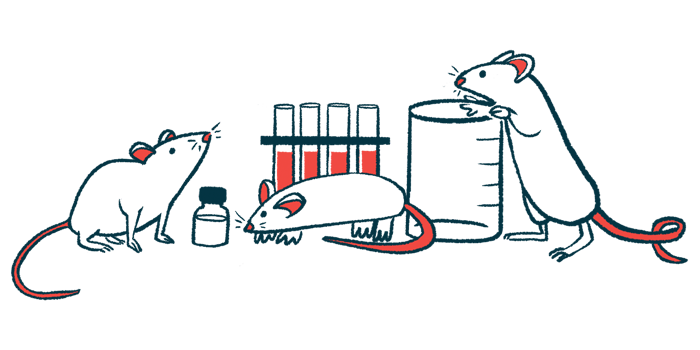mRNA treatment shows durable effects in Gaucher disease mice
Experimental therapy helps body produce missing GCase enzyme
Written by |

An experimental treatment that uses messenger RNA (mRNA) to help the body produce the missing enzyme in Gaucher disease reduced a biomarker of disease burden in a mouse model, with longer-lasting effects and fewer side effects than current options.
JCXH-301, which was packaged inside tiny spherical particles, was well tolerated after repeat dosing and boosted enzyme activity in multiple organs and tissues, including the blood, liver, and spleen.
The therapy may be a promising and more sustainable alternative to existing enzyme replacement therapies (ERT) for Gaucher, but more studies are needed to establish its safety and efficacy in humans. The study, “Systemically delivered lipid nanoparticle-mRNA encoding lysosomal acid [beta]-glucosidase restores the enzyme deficiency in a murine Gaucher disease model,” was published in Gene Therapy.
Gaucher disease is caused by mutations in the GBA1 gene, which provides instructions for making the glucocerebrosidase (GCase) enzyme that’s responsible for breaking down fatty molecules like glucocerebroside (Gb1) into smaller components cells can reuse. This enzyme is either missing or abnormal in Gaucher, so Gb1 accumulates inside cells, driving disease symptoms.
ERT is a mainstay treatment for Gaucher disease and delivers a working version of the missing enzyme through routine intravenous injections. The treatment doesn’t last long, so it needs to be administered frequently, which can be difficult or inconvenient to maintain over time.
Long-lasting effects than ERT
Researchers in China developed JCXH-301, which uses mRNA, a template molecule produced when genes are read to produce proteins. For the therapy, an mRNA encoded with the genetic instructions for GCase was packaged inside lipid nanoparticles, tiny fat-based particles, that protect it and help deliver it to cells.
When administered to mice, JCXH-301 reached tissues and enabled cells to produce the GCase enzyme on their own. This was also observed in mice carrying a disease-causing mutation in the GBA1 gene.
JCXH-301 reduced blood levels of lyso-Gb1, a fatty molecule produced from Gb1 and whose levels are often used as a biomarker of disease burden in Gaucher.
The effects of JCXH-301 lasted longer than those of Cerezyme (imiglucerase), an approved ERT for Gaucher disease. While enzyme levels in the blood peaked at 5-10 minutes after Cerezyme treatment and rapidly decreased at 20 minutes, GCase levels peaked at 12 hours and remained detectable for up to three days.
JCXH-301 also resulted in similar increases in enzyme levels in the spleen and liver, but it didn’t cause inflammation in those organs, a sign it may be safe.
“These results support the further development of JCXH-301 for the treatment of [Gaucher disease] patients,” wrote the researchers, who said if JCXH-301 is developed, it could cost less than $100 per dose for standard treatment, totaling about $2,600 in a year or $26,000 over 10 years, if given once every two weeks. This would be much less costly than current options that cost $150,000 to $700,000 annually, and offer a “more sustainable option for lifetime management of [Gaucher disease].”




